A Rush and a Push and the Land is Ours
So Long, Public Lands? Plus, History being erased, hummingbirds evolving, a highway turns into a park, a free Klamath River blooms, and more!
howdy

Hello, all! Wow, it’s been a minute, huh? Well, I guess I should catch y’all up on some things.
It has been an incredibly hectic few weeks. There has been a whole lot of shakeup around, some of it good—some of it a little less good. I successfully pulled off a surprise 40th birthday party for my husband that I’d been planning for six months, and that happened just a week and a half after my own birthday. It was a blast but a lot of work and I’m still sort of recovering.
I’ve also been working part-time as a copywriter for the past few months, and I got my hours bumped to full time. That’s great—but there was also a reorganization recently so I’m learning what my new responsibilities are and trying to figure out how to manage writing the newsletter with the new time asks. I apologize for the delay here—I’m figuring it out!
Also, sadly, I had two friends pass away within a week of my birthday, which hit me a lot harder than I was expecting it to. And of course, all of this is before we actually get to news and stories about the outdoors, which have been—let’s just say rough—lately.
With everything going on in the world right now, Republicans seem laser focused on the most important issue facing the country: how to sell off as much public land as quickly as possible. The so-called “Big Beautiful Bill” includes a lot to dislike, but for our purposes here, this proposal would authorize up to 3.3 million acres of public land in the West for sale.
According to the Wilderness Society, the bill’s provisions mean more than 250 million acres of land meet the legal requirements for being put up for sale—about the size of California, New York, and Texas combined.
Again, while not ALL of this land will be sold, any one of these parcels could be up for sale. And there’s not really any way of knowing how it will shake out if it passes.
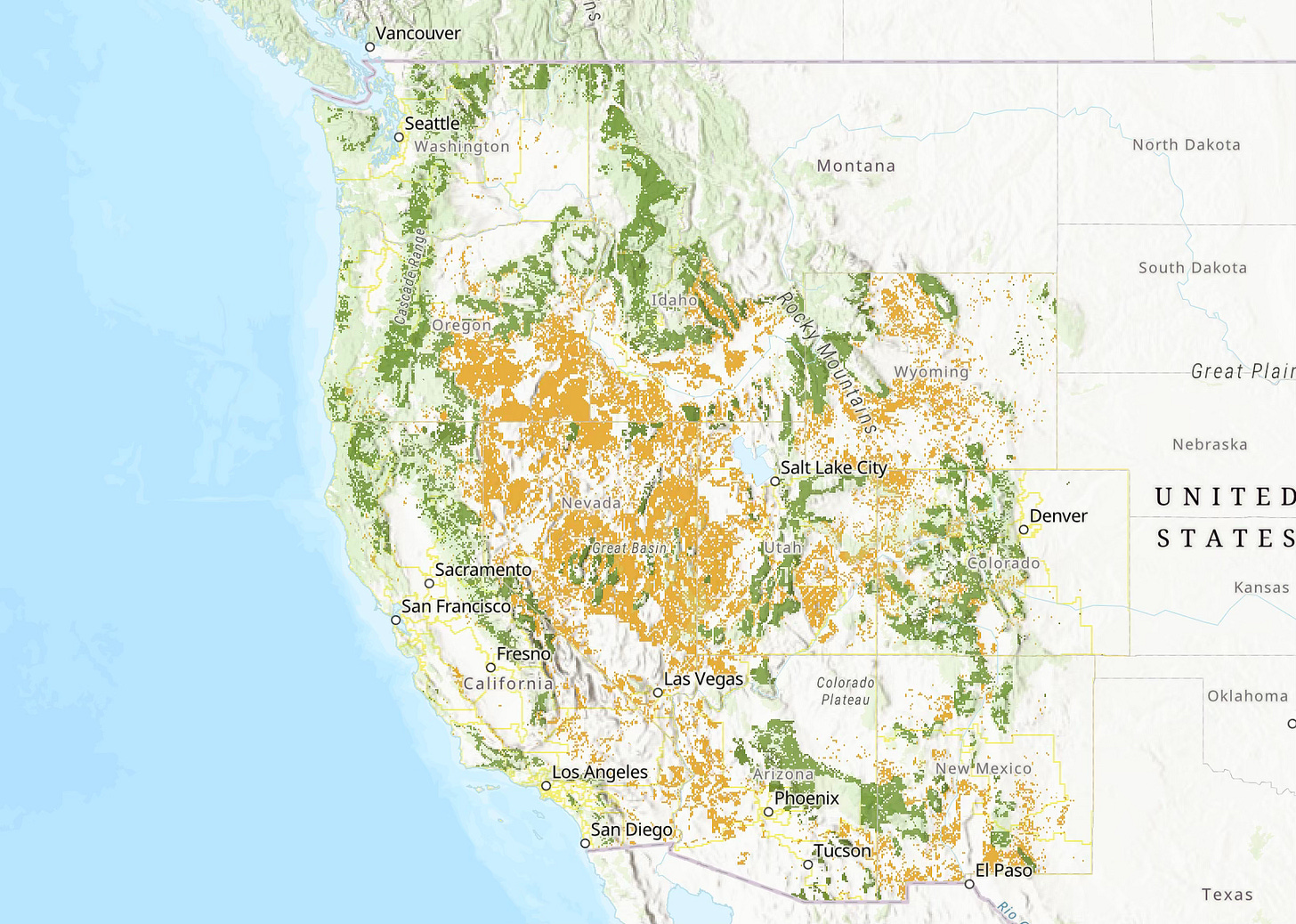
The good news is that—once again—a wide range of groups are coming out against this effort. Public lands users of all stripes are making lots of noise, bothering their Senators (and especially Utah’s Mike Lee, who is spearheading this monstrosity). Conservative outdoor groups have joined the opposition, MAGA influencers are piling on, and even Trump’s former Secretary of the Interior Ryan Zinke—who absolutely does not have a pristine conservation record—said the sale or transfer of public lands was his “San Juan Hill,” coming out forcefully against the proposal.
Newsweek has a great in-depth write-up of this issue, and notes that while the House passed its bill without the land sale provision, the Senate will be voting on the land sale and the margin is much more narrow there … so let’s make some noise.
And stay sane. Please stay sane.
Related: 23 popular places on the Congressional chopping block – Gear Junkie
Subscriber Section
Just a reminder … If you’re a paid subscriber, not only do you get instant access to newsletters as they publish and the ability to comment, but you also have the ability to ask me questions, anytime! Ask me anything about the outdoors, writing, travel, whatever, and there’s a chance I’ll answer it right here in the newsletter.
Also, thank you SO MUCH for supporting this project and keeping it going. It really means a lot to me.
The Big Story
Something to talk about
There are No Safe Spaces in History
Public lands are really being put through a lot these days. But in my opinion one of the most insidious attacks is on our very memory, on actual recorded history.
Last week, as part of the ridiculously named “Restoring Truth and Sanity to American History” executive order, federally managed sites were required to post notices throughout their lands asking visitors to alert the government to any “signs or information that is negative against either past or living Americans or that fail to emphasize the beauty, grandeur, and abundance of landscapes and other natural features.” Naturalist Jason Wise took this video of a notice in the Santa Monica Mountains National Recreation Area.
Now, there’s a lot to unpack here. I’m not surprised the same people who seem to have convinced a whole lot of Americans that the January 6th Insurrection was “a day of love” have come for our larger collective memory, too, but the land managers at parks, monuments, and historical sites have always been some of our nation’s best storytellers. And one of their jobs is to interpret and explain history to modern visitors—warts and all—so we can remember the good things we have done, examine past events with a modern lens, and also not forget some of the less-good things we have done.
This is not done to hamstring visitors with an inescapable sense of guilt, but to present a rich, evolving, and meaningful interpretation of our nuanced, complicated history. But I guess that’s all gone now? Now we’re just supposed to look at the pretty scenery—and focus on how abundant it is, too, so no big deal if we have to put up some oil derricks over here, right?
How, for instance, are rangers supposed to adhere to this at a place like Manzanar National Historic Site, where the United States government imprisoned over 10,000 Japanese Americans during World War II?
Like a lot of these sweeping executive actions, nobody really knows. It’s unclear whether or not this is a first play to fully close down sites like Manzanar, but considering the Trump administration’s track record with … well … everything, I wouldn’t put it past them.
Olivia Hebert from SFGATE trekked out to Manzanar to see some of these problems first hand. One more thing to keep an eye on, not that we needed that, right?
Your Parks
Your Places
Beach Season

Summer is here, and that means now your job is Beach. And lucky you, Lonely Planet has assembled an excellent list of the West Coast’s best beaches! Some of the heavy hitters are on here (Santa Monica Beach will not be a shocker to anyone, though I always preferred the relative quiet of Zuma), but this will be a nice primer for destination hunting this season.
I didn’t really swim a ton in the ocean before, but since I moved up to the colder waters of the Pacific Northwest, that has really dropped. But I am really lucky to be able to head to beaches on the Columbia River and even bike to docks on the Willamette in Portland itself. My brain still bends a bit when trying to consider a beach without salt water, but it’s one of my favorite parts of summer here!
Surprise, Surprise
A quick crash course on National Monuments: they can be created by Congress just like National Parks and other sites, or—since 1906—the President can declare one via powers granted in the Antiquities Act. There are limitations on this—and at least in modern history, it is usually invoked to move along a designation with local support that’s just been stalled in Congress. If you’re at all interested, I wrote a big primer on this process back in 2017, when the first Trump administration decided this law also allowed them to do the exact opposite of what the law said.
Well back then, a whole bunch of lawsuits were filed that got a bunch of lawyers paid but never actually solved anything, because the Biden administration just reversed the orders. But now we’re back with Trump Part Two, and because Congress did not bother to codify and clarify the Act, surprise surprise it’s happening again.
The Trump Justice Department just decided it can completely undo Monuments, and they’re looking at abolishing the two most recent California additions—Sáttítla Highlands and Chuckwalla National Monuments. Who could have seen this coming?
Look for more lawsuits and foot-dragging. And probably more attempts to undo Monuments. Fax your congressperson and tell them this sucks.
Highway to Park
Many many years ago, I was called a “Bike Nazi” because I ::checks notes:: commuted to work by bike in Los Angeles and wanted better bike infrastructure. So I am used to a backlash any time the primacy of automobiles is questioned. I think Angelenos are at the high end of sensitivity to this sort of thing, but it’s not just there—in San Francisco, a section of the Great Highway just south of the western edge of Golden Gate Park was recently closed to automobile traffic and turned into a park. In just a few months of opening, the park has become one of the city’s most popular destinations, but that doesn’t mean people aren’t mad about it. The Supervisor who spearheaded the park transition now looks like they will be subject to a recall election.
Wildlife Crossing
Wildlife and the Outdoors
Hummingbirds Evolve

I forget where I read it, but a while back I learned that Anna’s Hummingbirds—those ubiquitous west coast dive-bombers—were originally only found in a tight strip along the Pacific Coast from Baja California to the San Francisco Bay. As human habitation increased in the region, the hummingbirds expanded their territory, feeding on ornamental plants, agriculture, and gardens as far east as Arizona and north as Vancouver, British Columbia.
A new article in Science documents even more interesting interactions between humans and hummingbirds—we’re changing their beaks. A new study finds that over just a few generations, the birds’ beaks have “dramatically changed in size and shape.” What’s interesting here is that the shapes themselves are different, too—in dense urban areas where there are lots of bird feeders, beaks got longer and larger to tap into this additional food source. Males in these areas also saw their beaks get sharper, as hummingbirds are very territorial about their food. As the range increased north to colder climates, beaks got smaller to help the birds conserve body heat.
If you’re the type of person who loves knowing very specific words (hi! It me!), the term to describe when two species form a close associative and beneficial relationship is called commensalism (or you may see this described as “commensal species.”). If this helps you at trivia or crosswords, you’re welcome. Feel like spotting me for a coffee or two?
Leafing Out
Plants!
Dam Recovery!
It’s often easier to spot the negative effects we are having on the environment around us, so it’s important to remember that good stuff is happening too—and that sometimes when given a break, nature can bounce back faster than we might have expected it to. Such is the case on the Klamath River in Southern Oregon and Northern California, where a series of dams were removed late last year.
Within weeks, salmon began to repopulate the river. And as crews left, they seeded and planted newly-exposed slopes with native vegetation. A few weeks ago, these areas put on a spectacular wildflower show, and the Yurok Tribe (who regained stewardship of the land) spotted evidence of lots of wildlife, including otters, turtles, turkeys, eagles, beavers, deer, and lots of others.
They posted an inspiring slideshow on Instagram, and I can’t wait to see what this looks like a few years from now!
One More Thing
Oh yeah, before I go …
If you couldn’t tell from the tone of some of this newsletter, I know it’s tough out there. You know it’s tough out there. And while a lot of the attacks on the outdoors and public lands are important, it’s also important to take care of yourself.
The good news is that it doesn’t always take a ton of time to have a good effect on your outlook and emotional well-being. A recent study from the University of California San Francisco found that “small, easy-accessible interventions” like listening to laughter or stopping to look at flowers on a neighborhood walk had a measurable positive effect on people’s emotional states even with only 5 to 10 minutes of activity.
You can read more about the study here, and join the online version of this called the Big Joy Project here. And don’t forget—just getting outside without a cell phone counts.
Until next time, Happy Trails, all.





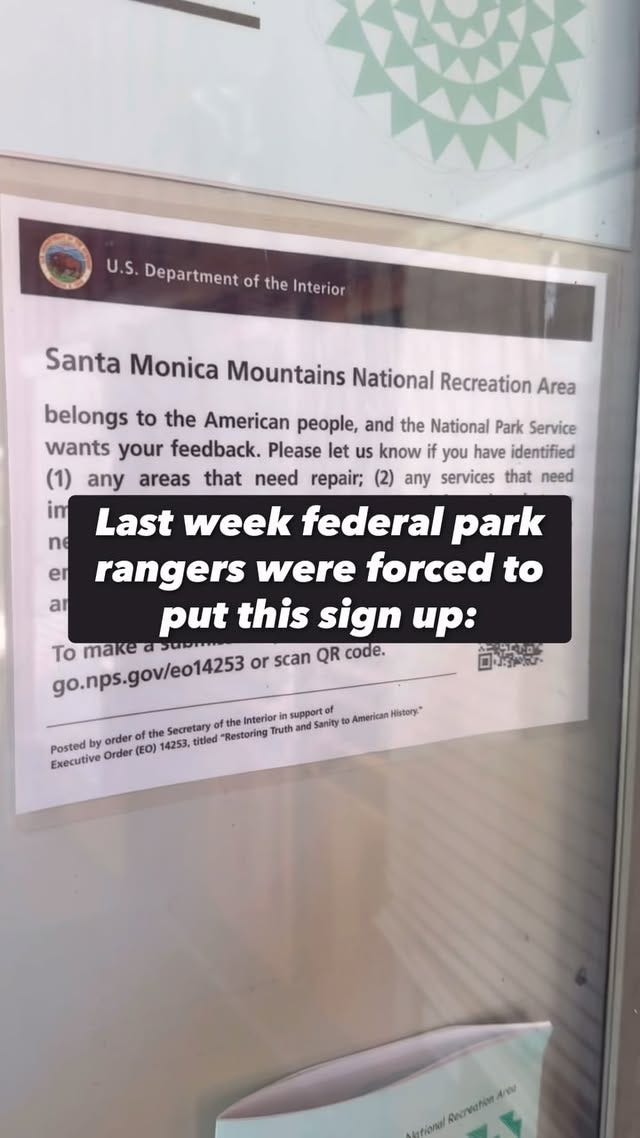
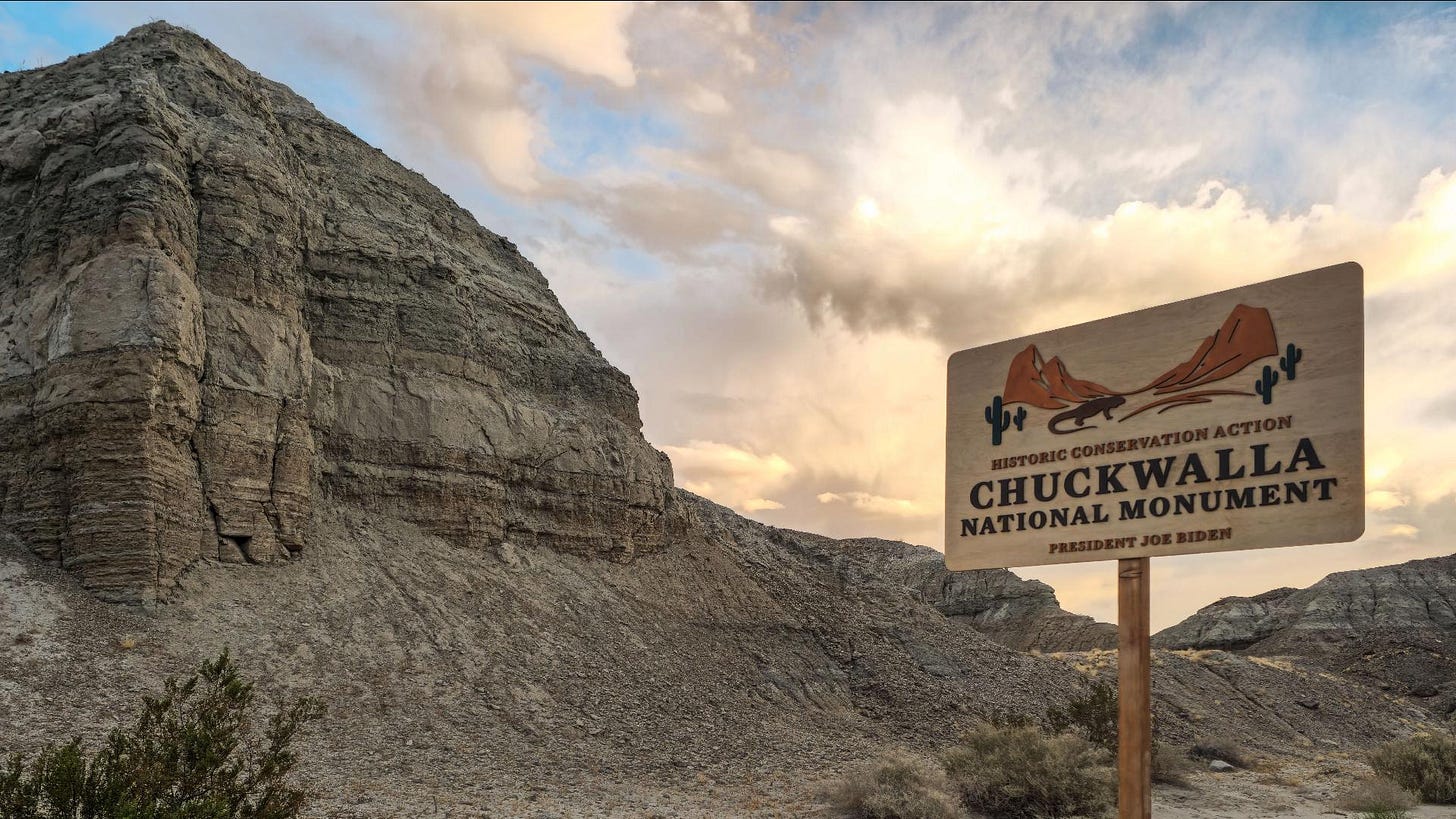
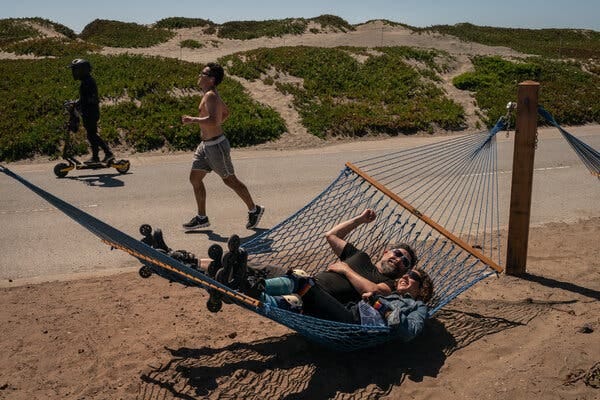
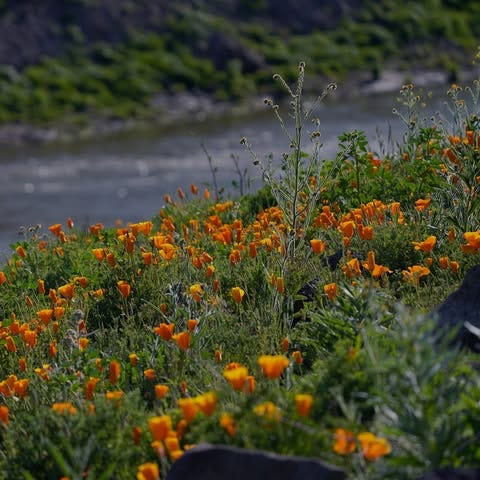
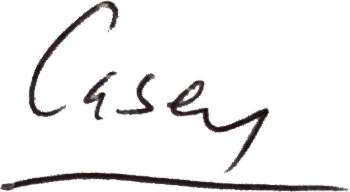
Good perspectives, each issue.Thank you.